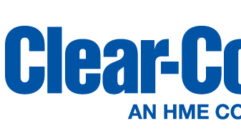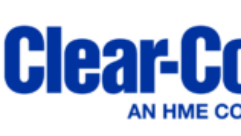
In this edition of the SVC Podcast, AV technician Bill Scott of the San Diego Opera is back with SVC Contributing Editor Bennett Liles as they wrap up their discussion on the Clear-Com Tempest 2400 Digital Wireless system recently added to the communication setup for the opera. Scott also gets into the technical design for the productions and his use of microphones. He provides details on how he uses the Clear-Com T-Desk software and how he mounted the intercom antennas for the stage area.
Links of interest:
- The Clear-Com CM-244 4-channel base station
- Press release on the San Diego Opera and the Tempest 2400 system (The Wire)
- The CC-26K light headset used by the stage crew
- Sony HVRZ5U HD camera used to provide video feeds
Download Podcast Here:
https://s3.amazonaws.com/nb-svc/public/public/11_26_13-Bill-Scott_SD-Ope…
Nov 25, 2013 11:38 AM,
With Bennett Liles
Listen to the Podcasts

Editor’s note: For your convenience, this transcription of the podcast includes timestamps. If you are listening to the podcast and reading its accompanying transcription, you can use the timestamps to jump to any part of the audio podcast by simply dragging the slider on the podcast to the time indicated in the transcription.
Of all the technical aspects behind an opera production, intercommunication during the show can be one of the biggest jobs to sort out. Bill Scott does just that and a lot more for the San Diego opera and he’s here to tell us how he does it with a new Clear-Com Tempest 2400 wireless intercom. Right here on the SVC Podcast.
SVC: Bill Scott from San Diego is back with us on the SVC Podcast. This was a fascinating talk we were having in part one about what goes on behind the scenes for intercom at the San Diego Opera with the Tempest 2400 wireless system. Is there other wireless gear that you use during the opera productions and stage mics for recording?
Bill Scott: There are stage mics for recording, but there aren’t really any other RF mics. I use area mics for recording. The opera really owns only one other wireless microphone, and that’s generally used for curtain speeches when somebody needs to come out and talk to the audience. But the top goal is to provide the audience with a 100 percent acoustical experience, so nothing is amplified or reinforced to the audience, whether it’s an instrument or a singer—other than a sound effect. Of course we’ll do sound effects electronically sometimes and sometimes not. But as far as the music, the goal is 100 percent acoustic and we accomplish that almost invariably, but then there’s that one percent of the time where a singer or a chorus will need a little reinforcement. It’s like in Butterfly, there’s a thing called the “Humming Chorus.” The chorus literally hums and where can you stage them out of sight where you’re going to get some kind of presence on that? So that may need to have a little reinforcement. Or like in Salome, John the Baptist is in the well. When he’s in the well singing, you may need a little reinforcement because he’s physically in a well, or something of that nature. [Timestamp: 2:28]
And you’ve got stage mics for recording?
There are mics for a variety of purposes. There are mics that need to feed that audio signal to the people that need to hear it, like our opera techs operator. Of course the stage managers need to hear it, people that are doing the listening-assisted, you know, that are providing commentary or whatever for the handicapped, they need to hear a particular signal, and all of these are different mixes than what I do for recording. So I might use separate mics just for those, and then I have my mics that are used just to go to the recordings. So yeah, there’s mics all over the place, but there’s none of them going on to the audience. [Timestamp: 3:11]
That’s a lot of show infrastructure to get working. How long do you have to get it all set up and ready to rehearse? What are the steps you go through?
Well, when we load in at the beginning of the season, we have two six-day weeks when we’re just reestablishing ourselves. We’re putting in our permanent equipment that we’re going to need for the run of the season, whether that’s lighting trusses, lighting bridges, and all the infrastructure equipment that’s basic to every show. During that two weeks we’re also setting up the first show, setting the scenery, etc., for that first show. So it takes a good while. It takes me generally about seven or eight of those initial 12 days to be ready to do a rehearsal, and then at the end of that period I’ll start working on getting my recording together. Although we’re not recording, for the last two years, we’ve been broadcasting opening nights live, which is really fun. But our local public broadcasting station takes our feed right from the theater and broadcasts it live, so that’s a lot of fun. And we record archivally another performance or two of the run. [Timestamp: 4:24]
I know that the Tempest 2400 system has a lot of features on it. Remote mic kill and stage announce are some of the good intercom features. Is there one particularly handy feature of that belt pack system that sort of stands out, one that you use more than anything else?
The stage announcer is a powerful feature in terms of every beltpack, whether it’s 2-channel or 4-channel, has that; I believe the 2-channel. You have the stage announce button and it’s literally you just press that button and whatever communication you deliver goes to all four channels no matter what configuration your beltpack is in or what channels you’re listening to or talking on, when you do the stage announce it goes to all of them. So if you’re trying to connect with personnel and you’re not sure what channel they’re on, instead of kind of fumbling around going from channel to channel, you just hit the stage announce and everybody’s going to hear that. And also the stage manager themselves can deliver a cue to all channels at once by using that feature. It’s really, really powerful. [Timestamp: 5:35]
Nov 25, 2013 11:38 AM,
With Bennett Liles
Yeah, everybody likes that when setting up any kind of stage show because people are running around everywhere and you never know exactly where to find them. Tell me about the T-Desk software. Is that what you use for the initial setup?
We have seven base stations, I think, and we’re buying an eighth for this year. We’re adding another system just to give us more capability. And all of those can be tied to a router and then you can have a closed system where you’re seeing every one of those base stations just on your laptop with the T-Desk software. And not only are you looking at them, but you can literally just change any beltpack, any base station. You can do anything that the system’s capable of from the laptop. [Timestamp: 6:20]
You could have a real sense of power with that.
You know, it just gives you a real sense of relief as well. You don’t have to wonder what’s going on with somebody’s beltpack. You can physically look at it and see that the person is doing this or that. They’ll get into situations where they’ve done something with their beltpack and they’re not sure how they did it or how they got there, and you can just tell them or back them out of it or change it for them. And the software is incredibly user-friendly. I mean it couldn’t be more straightforward. You look at it and it’s obvious everything that is going on. There’s no guess work. You don’t have to fumble through a lot of menus to find out what you want. You just go there and do the work and it’s tremendous. [Timestamp: 7:05]
And you have all the different coverage areas set up with the base stations. What sort of antennas do you use for those base stations to do the coverage areas?
Whip antennas that come with the base stations for local area use, when you’re local to that base station. We have to extend out because the base stations are in a metal cabinet or road case or whatever, and so just to get the improvement of the reception, we mount the antennas out. We get them as high up as we can. We have a set of what we call hard legs. It’s the first set of legs down stage are hard and so I can attach the antennas to the back of them. And then several of the base stations are remoted out. By that I mean I take a remote antenna box and place it in an area, in this case the dressing room and the rehearsal hall and the production offices, where I want to be able to maintain wireless communications. And by just linking that remote antenna with the base station via a Cat-5 or Cat-6 cable, then that antenna is remoted to that area. It’s great because it not only carries the reception and the transmission via that Cat-5 cable, but it also carries power. So I mean I don’t even have to worry about plugging the remote antenna into a wall. The power is derived over the Cat cable as well. It’s so simple. [Timestamp: 8:33]
Fewer cables running all over the place. With all that’s happened with the wireless spectrum the past few years, long-term planning had gotten to be more than a little dicey figuring out your plan.
We weren’t sure where we were going to go, because when the FCC started auctioning off all the spectrum four years ago, nobody knew where wireless communications as far as theatrical use was going to go. I mean we were absolutely the orphaned stepchild in this scenario and the FCC could care less about—I don’t know if they could care less, but we were the bottom of the totem pole as far as being allocated usage in the RF spectrum. So we just didn’t know what was going to happen and we didn’t want to invest in the system until all of that shook itself out and became clearer. We knew somebody would pull our iron out of the fire eventually and it was Clear-Com with the 2400 system. Now we’re digital, we’re way up there and we’re not going to bother anybody. We don’t have to worry about it, at least for the next who knows how many years, but it should be 30 years until the FCC figures out how to infringe on our digital domain up there. [Timestamp: 9:48]
Yeah, a lot of people were waiting for that situation to settle down to figure out what they were going to do.
Thankfully Clear-Com did it as far as we’re concerned. They hit the ground running and they got us what we needed.
I appreciate your telling us about it, Bill. Intercom is one thing that most people don’t think a lot about until the moment they need it and things have gotten pretty confused. I’m glad you got the improvements made. Bill Scott from the San Diego Opera and the Clear-Com Tempest 2400 Digital Wireless system.
My pleasure. And if I could just put in a plug, I just encourage anybody listening to please attend the opera. It’s a beautiful art form and it really needs your support. So I’ll see you at the opera.









